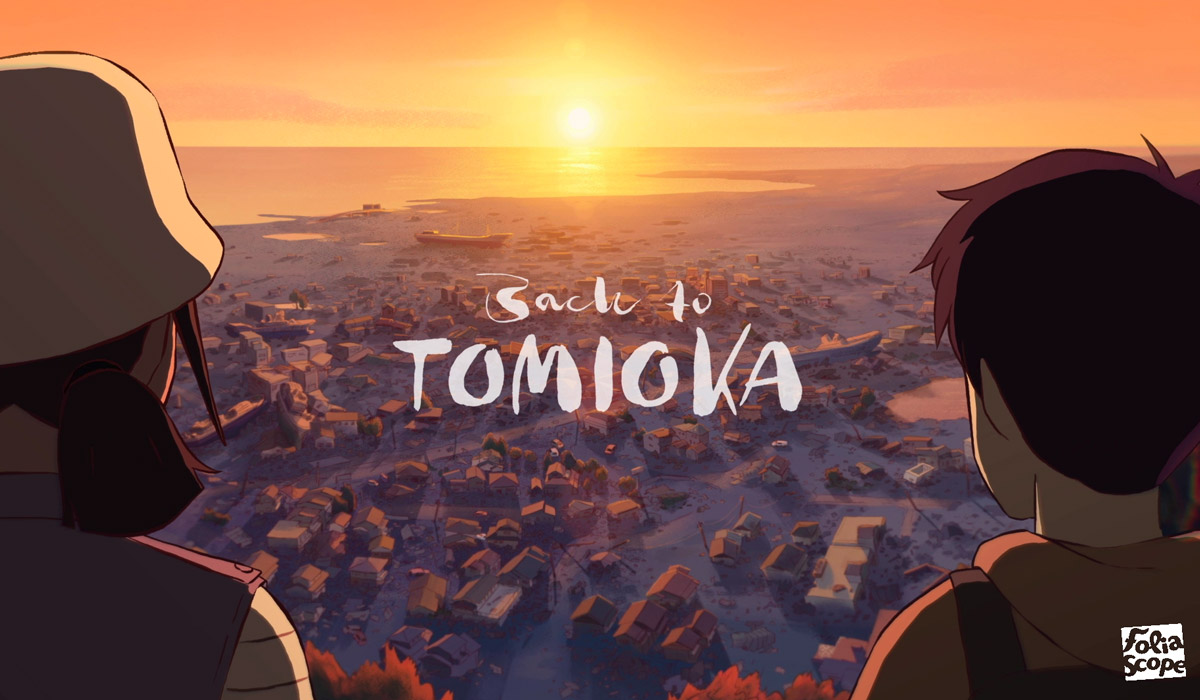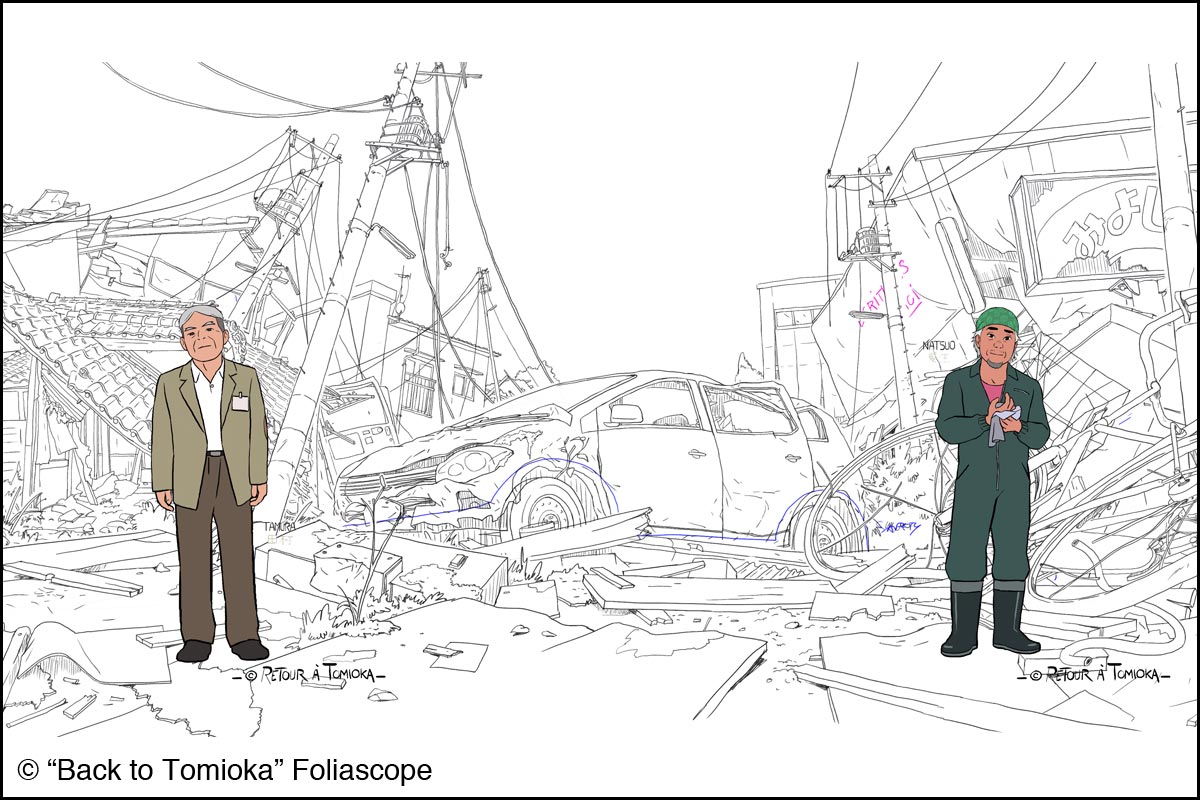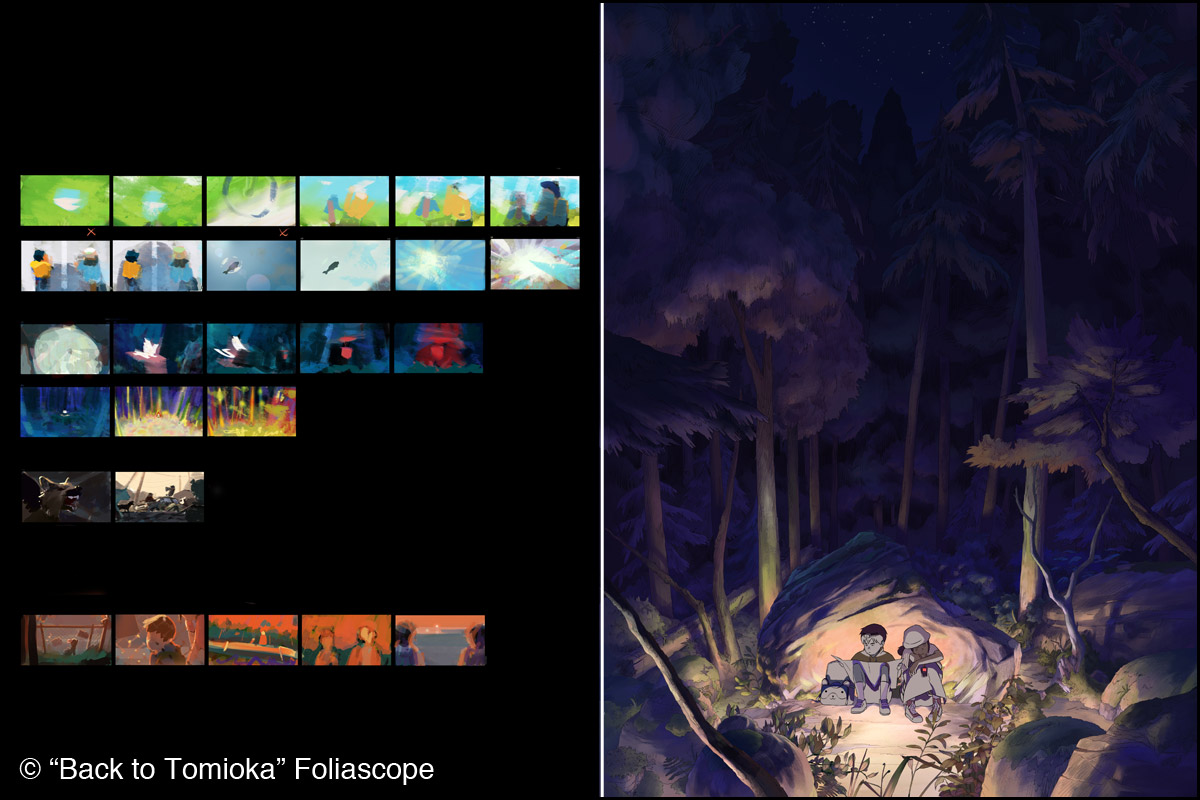Back to Tomioka
(Status: In Development)
Synopsis
Two years after the Fukushima accident, orphans Akiko & Otani live with their grandmother Obasan in a refugee camp. When Obasan dies and a distant uncle pops up to take them back to Tokyo, Otani convinces his sister to run away. They must go and lay their grandmother’s ashes at the family altar located in Tomioka, in the heart of the forbidden zone. Otani, reserved child who only communicates with Yokai and Akiko, the little beauty blogger, embarks on an initiatory journey. Pursued by a taciturn policeman, passionate about butterflies & their hurried uncle, the children rediscover the strange province of Fukushima where nature gradually takes back its rights. Assisted by an eccentric old man who chose to help the animals in distress, the brother & the sister are confronted with a brand new Yokai born of radioactivity.
Back to Tomioka
Director: Michaël Crouzat
Author: Laurent Galandon
Producer: Ilan Urroz (Foliascope, France)
Target audience: Children (8 to 14 and up)
Technique: 2D digital
Format: 80’
Back to Tomioka is a beautiful, highly-anticipated 2D-animated feature film project on natural disasters and extreme weather conditions.
The film is of two children going on a journey in the Fukushima prefecture, Japan, that contains a huge exclusion zone due to a severe nuclear plant accident that was caused by a huge earthquake and tsunami. However, they find a ray of hope beyond their harsh difficulties through several fateful encounters.
We heard the story behind Back to Tomioka from Laurent Galandon, the author, Michaël Crouzat, the director, and Ilan Urroz, the producer.
Interview with Laurent Galandon, Michaël Crouzat, and Ilan Urroz
Hideki Nagaishi (HN): How did this film project start?
Ilan Urroz: As usual in Foliascope, we start a project when we read a script. And with the one from Laurent, we had pictures in mind reading this amazing story. Then, as producer we apply for development funds. We are lucky to have Auvergne Rhône-Alpes Cinema, who’s the first partner investing in our project. Then, with the script we also win the rewriting fund for feature film from the competitive CNC fund. Very good returns to start this journey!
HN: What is the main theme or message of the film story?
Laurent Galandon: I dare to believe that there are several transversal themes in this story: that of mourning, of the initiatory path, of solidarity and of resilience. However, I don’t want to emphasize a message. I like the idea that each spectator will draw his own. With such a story, it is more a question of offering a beautiful and moving moment of cinema and of provoking a discussion between spectators, between parents and children. Faced with the ecological challenges that lie ahead, it is necessary to have a better understanding of our world. But, as Hayao Miyazaki said: We cannot understand what is happening in the world by being Manichean, “for” or “against”*.
*Source: Stéphane Jarno (2014, January 04): Hayao Miyazaki : “J’ai été très gâté, j’ai pu accomplir tout ce que je voulais”. France: Télérama
HN: Where did the initial idea of the film’s story come from?
Laurent Galandon: Every year, the world has its share of disasters. They are then the object of all the media attention for a few days. Then they disappear in favor of new news. However, individuals remain bruised for a long time, upset by the obligation to abandon their goods, their land and their animals; by the disappearance of their loved ones. A life that is necessarily and definitively marked by the accident. It is this “aftermath” that was the starting point for Back to Tomioka. How does one continue to live after such a traumatic event? What path of resilience does one take to cope?
There are, of course, several possible paths. Otani and Akiko’s adventure is one of them. Because France has more than 50 nuclear power plants, it is difficult to remain indifferent when an accident like the one in Fukushima takes place. We know that most of the French power plants are aging. Therefore, nuclear power continues to raise many questions. However, our story is not an anti-nuclear plea. This story just invites vigilance and debate.
HN: Michaël, what do you and Laurent Galandon take care in the most when you develop the script?
Michaël Crouzat: Laurent is the author of the script. Together, we work on the storyboard as well as on the cutting of the comic book. During these stages, we try to set up the story in such a way that it remains focused on our two heroes and their progressive discovery of the forbidden zone. There are several mysteries that the audience will discover; it is important for us to manage to reveal them at the right moments. However, the story remains a road movie tinged with chases. We have to manage to make the audience feel a certain tension, a breathless side sometimes.
HN: What is the most important characteristic and goal of the film’s visual design of the characters and the setting/backgrounds/environment?
Michaël Crouzat: I think Back to Tomioka will speak to a wide audience because of the strength of its story. Its story at the level of children tackles universal subjects such as mourning, family, or exile. Our characters will have to show courage, determination and inventiveness to reach the end of their journey. All of this in a context of a forbidden zone that stirs up an anguishing imagination common to everyone. Finally, the film has the ambition to offer beautiful images of animation in the spirit of our Japanese inspirations such as the films of Mamoru Hosoda and Hayao Miyazaki.
HN: Could you please let us know about the research you did for this film project so far? I want to hear about the story of the real-life person that inspired the middle-aged male character in the film’s story who takes care of animals in a no-entry zone in the Fukushima Prefecture?
Ilan Urroz: For the story, Laurent made a lot of research as he always does for his comics (more than 55 comics!). The starting point was the earthquake, but quickly the nuclear power plant came in. In Valence (where the studio is based) we have the headquarters of the NGO CRIIRAD (https://www.criirad.org/). Founded in 1986 after the Chernobyl incident, CRIIRAD is an international independent NGO, making laboratory test and analysis, sharing information, and trying to improve the protection of nature and mankind. CRIIRAD have participated in sharing information, making analysis directly in Fukushima, with Japanese NGOs. Laurent has access to the board members and share a lot with the people involve in Fukushima. He also discovers Naoto Matsumura, the man helping all the animals that stay in the forbidden zone, very famous and has a lot of coverage in media. But all this information and sharing convinces us that the real interest was not in extraordinary people but more in the common people who lived in this area.













